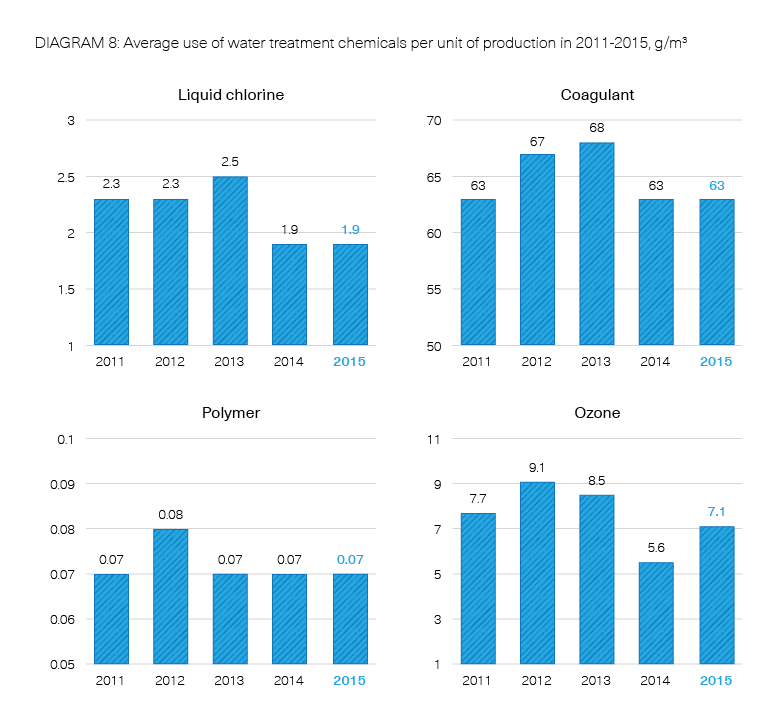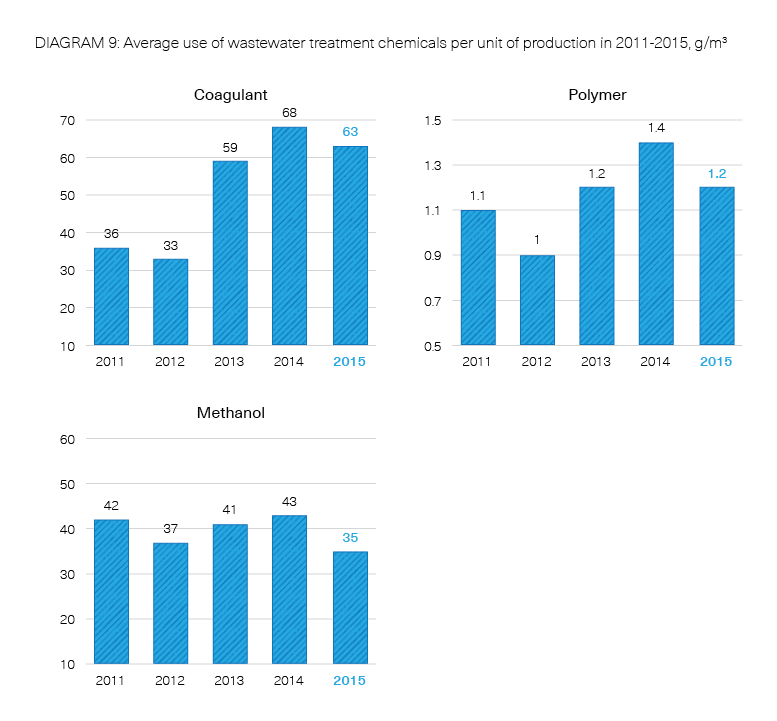Use of Chemicals
We use approximately 325 hazardous and less hazardous chemicals (indicated by new chemical inventory) in our operating activities. With regard to the health and wellbeing of our employees we deem a safe handling of chemicals at the work site extremely important. For this purpose, we have created necessary conditions for a safe storage and use of all chemicals. In 2015, we used total of approximately 6,090 tons of various chemicals in our operations.
In 2015, no reported accidents with chemicals occurred, which could have caused damage to people or the environment.
Use of water treatment chemicals
Chlorine is an effective disinfecting chemical with a long-term aftereffect. We add chlorine in the final stage of the water treatment process to ensure the microbiological purity of water and to help to maintain the water quality in the city’s water distribution network. Chlorine has a strong oxidising effect and is extremely poisonous for aquatic life. In Estonia, we have been classified as a category B company with risk of a major accident due to the chlorine stored at the plant and used in the water treatment process. By applying the necessary safety measures we have minimized the likelihood of chlorine accidents.
Ozone is a good and quick oxidiser which effectively breaks down organic matter and microorganisms in raw water. Ozone is produced locally by us and only in necessary amounts. Thanks to the closed process and no stock being kept, the environmental risk is taken to a minimum.
Coagulants and polymers - Significant amounts of coagulants and polymers in liquid form are added in the treatment process to remove the particular matter (e.g. suspended solids and organic substance) from water.
Water quality in Lake Ülemiste is strongly dependent on the weather, however, long-term observation has established periodic changes in quality by comparing the years. Year 2015 gave average results in terms of raw water parameters and the use of chemicals was the same as or, in case of ozone, slightly higher than in 2014.
Use of wastewater treatment chemicals
Methanol – We use methanol at the wastewater treatment plant to increase the nitrogen removal efficiency of the bacteria participating in the biological treatment process. Due to the extremely explosive methanol used in wastewater treatment, we have been classified as one of the most hazardous companies in Estonia.
Coagulants and polymers – Significant amounts of coagulants and polymers are used in the wastewater treatment process. Coagulants are used for the chemical processing of wastewater to remove phosphorus. Polymers are used to change the qualities of sludge by accelerating the dewatering process.
The amount of chemicals used in the wastewater treatment process is dependent on the pollution levels of incoming wastewater, which is in its turn affected also by the weather. The higher the concentration of pollutants in incoming wastewater and the lower the legal limits of pollutants allowed in the treated effluent, the higher is the volume of chemicals used in the wastewater treatment process. The use of chemicals in 2015 was slightly lower than in 2014.

